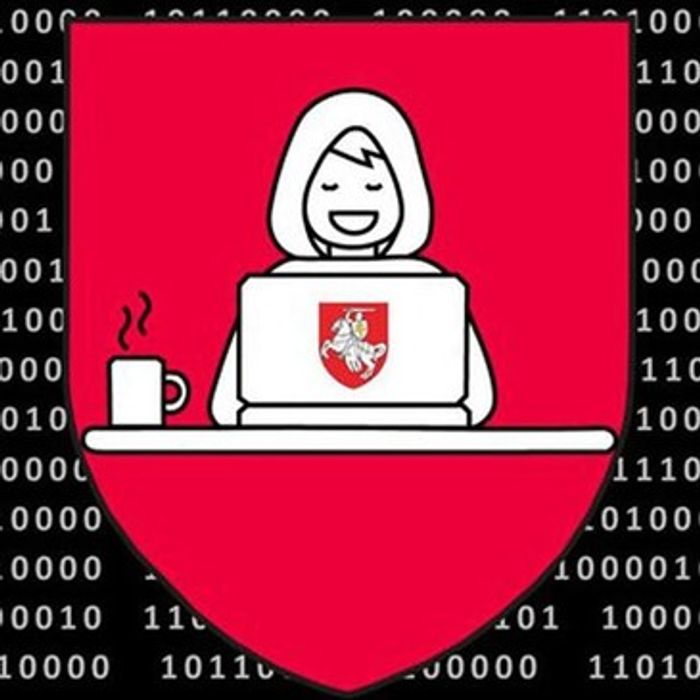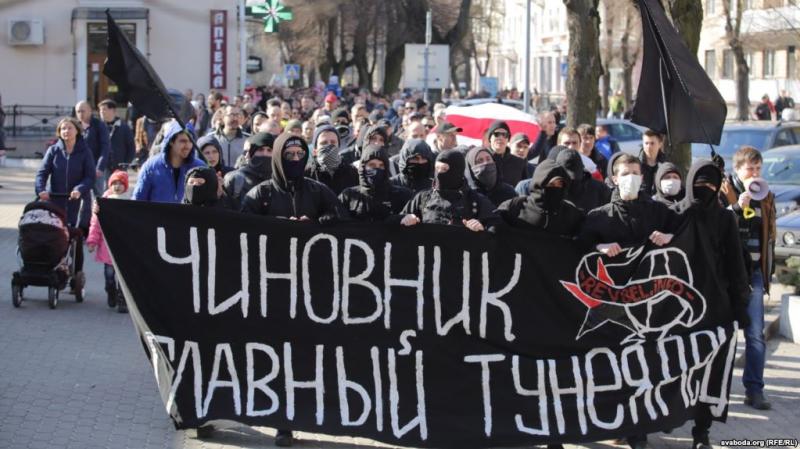As the Lukashenka regime continues its crackdown on the civic and protest activity in Belarus, a new type of resistance has come to the forefront. Cyber guerillas deface state websites, hack databases, and wiretap state officials. Moreover, they have a victory plan. Who are these anonymous warriors, activists or terrorists, and do they have a chance at success?
The world’s first Telegram revolution: how social media fuel protests in BelarusThe use of the messenger allowed protesters to receive text messages even when the Internet was blocked, thus agreeing on their actions. To a large extent, it was the use of communication technologies in the face of widespread repression that made possible such a massive anti-government movement as we saw it in August-October last year. And today, when the regime’s massacres have reached immeasurable proportions, and expressions of dissent may result in imprisonment or even death, hacktivists remain the main elements of resistance. Here is who they are and how they act against the Lukashenka regime.
Belarusian cyber guerrillas
Belarus, like Ukraine, is known for its IT specialists. Thousands of industry representatives work here. After the election was rigged, many of them joined the protesters who demanded justice. With the start of the street confrontations, more than 2,500,000 CEOs, investors, and developers wrote an open letter calling on the authorities to stop the violence. That was when the IT sector became the target of authoritarian regime reprisals.Ukraine rolls out official site to help Belarusian IT specialists relocateOn 2 September 2020, employees of the Financial Investigations Department of the State Control Committee of Belarus raided the Minsk office of the PandaDocs IT company. The reason was that the founder of the company created an initiative to raise funds for law enforcement officers who decided to change their profession. As repression and harassment were gaining momentum, many IT companies decided to relocate their offices. As of March 2021, almost 40 Belarusian information technology enterprises moved to Ukraine. However, today we will focus not on those industry representatives, who just fled the dictatorship or helped their affected compatriots, but on professionals who created a whole hacker group to oppose the regime. They call themselves cyber guerrillas, and their main goal is to destabilize the work of all agencies that support the rule of Alyaksandr Lukashenka and to keep the illegal government in constant tension. The most famous deed of cyber guerrillas is the hacker attack on the website of the Administration of the President of the Republic of Belarus on 2 September 2020 when the opposition white-red-white flag was placed on the main page of the web resource. Then, one after another, the state Internet portals were tapped into, and the hackers even reached the Ministry of Internal Affairs of Belarus, on which they put Alyaksandr Lukashenka and Minister of Internal Affairs Yuri Karayev on the wanted list.

How do cyber guerrillas work?
Apart from hacking state websites and trying to prevent further unraveling of the spiral of violence, the hacktivists have a Victory Plan that was published on their Telegram channel on 12 April this year. The main event for which hackers are preparing is Moment X, when massive protests against the authoritarian regime will break out. Cyber guerillas pave the way for a new wave of protests together with the Busly Lialiats movement, a resistance group of the citizens of Belarus, and the units of people’s self-defence.
- Cyber attacks on critical infrastructure;
- Launching the newly created X-App application, which will paralyze state websites if it is used within them;
- Using the "Vulnerability Map." That is, a guerrilla will be able to open the map and see the vulnerabilities of the regime, as well as receive instructions to break on their own.
Activism or terrorism?
Trending Now

“We have no need for CIA help” – Ukrainian hackers of #SurkovLeaks | Exclusive interview
What have the cyber-guerillas already achieved?
The hackers began with more symbolic actions, such as hacking the website of the Presidential Administration of Belarus and publishing a protest flag there. However, now their actions have acquired a new character. They are currently conducting Operation Heat, which can be followed on the Telegram channel. The name was chosen not by chance, but after the Ministry of Internal Affairs made a statement that their bases had failed due to abnormal heat, not due to the actions of cyber guerrillas. During the operation, hackers broke into the traffic police automated information system “GAI-centre,” system “Passport,” the database of the police 102 service, the database of the Department of Internal Security, and the Main Personnel Department of the Ministry of Internal Affairs. According to the hacktivists, they “completely or partially paralyzed entire areas of the punitive system.” In addition, scandalous fragments of wiretapping of phones of government officials and special services agents got into the network. The regime’s most famous reaction to the activities of cyber guerrillas is Lukashenka’s address to the government: “If you can’t protect information on your computers, then go back to paper. Write by hand and put it in a box.” In addition, the Ministry of Internal Affairs of Belarus claims that the police have all the means and technologies to identify and prosecute those responsible for the leak. Immediately after that, the Ministry of Internal Affairs made another statement claiming that there were no mass layoffs and media leaks only “strengthened the fighting spirit.”Belarus hacktivists dox riot police after mass detentions of Women’s March participants | PhotosIndeed, cyber guerrillas are penetrating even deeper into the personal data of the Lukashenka regime as long as it tries to pretend that nothing happens and everything is under control.
Conclusion
At present, it seems that cyber guerrillas are doing their best to prepare for new rallies and keep the regime in suspense. In a short time, they showed that they can and know how to fight. But in order to win, hackers need the support of not only protest groups but also citizens. Belarusians are tired of beatings in the streets and atrocities in detention centers, as well as the lack of changes following mass protests. The main threat to cyber guerrillas is not the possible exposure by security forces, but the inactivity of citizens. Belarusians continue to leave the country, and this once again calls into question whether Phase X and Moment X will receive the necessary support. Also, a lot of information about the future plans of hackers is publicly available. Yes, they claim that they do not reveal all their ideas but the already available information can help the regime prepare for the day when the Victory Plan will be launched.Anastasiia Hatsenko is an information security expert at the ADASTRA think tank
Related:
- The world’s first Telegram revolution: how social media fuel protests in Belarus
- Do this to hit Lukashenka’s regime, say Belarusian activists (spoiler: it’s not banning flights)
- Belarus hacktivists dox riot police after mass detentions of Women’s March participants | Photos
- The year that changed Belarus: where Lukashenka’s regime stands after a year of protests
- “We have no need for CIA help” – Ukrainian hackers of #SurkovLeaks | Exclusive interview
- Why has Ukraine succeeded as a democracy, contrary to Russia and Belarus?
- “A blatant North Korea in the center of Europe.” Belarusian refugees explain why it’s so difficult to beat the dictatorship
- Discover Belarus, “the country of nine million hostages,” with Belarusian writer Andrei Khadanovich
- Ukraine rolls out official site to help Belarusian IT specialists relocate





